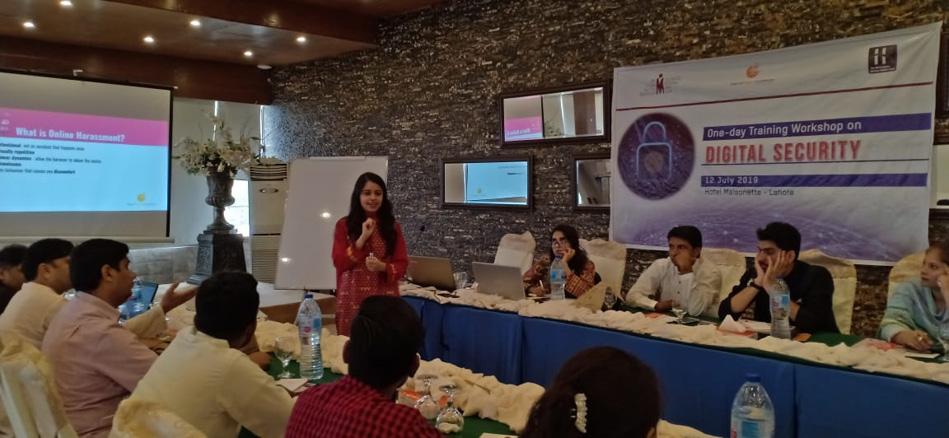
4 minute read
Digital security
Digital security is an expansive topic that we will not attempt to cover in detail here. The Tactical Technology Initiative and Front Line Defenders have together developed tools and tactics for your digital security, called Security–ina-box. It was created to meet the digital security and privacy needs of advocates and human rights defenders. The digital booklet addresses a number of important digital security issues, some of which are listed here:
• How to protect your computer from malware and hackers • How to protect your information from physical threats • How to create and maintain secure passwords • How to protect the sensitive files on your computer • How to recover from information loss • How to destroy sensitive information • How to keep your internet communication private • How to use smartphones as securely as possible
Advertisement
Security-in-a-box will take you through these issues and advise you on how to deal with them. Let us give you a few examples:
Before worrying about private communication and secure passwords, keeping your computer healthy is a critical first step towards security. Security-ina-box explains more about the specific threats of malware, how you can use different tools to protect you from these, how you can keep your computer secure by updating your software frequently and why you should use free and open source (freeware) tools to avoid the dangers of expired licenses and pirated software. If you work with sensitive information and topics and are interested in using social networking services, it is important to be very aware of the privacy and security issues that they raise. Human rights defenders are particularly vulnerable to the dangers of social networking sites and need to be extremely careful about the information they reveal about themselves and the people they work with. It is thus important that you understand how different social networking sites make you (and your contacts) vulnerable and that you can take steps to protect yourself and the people you are working with.
Digital rights and security are also a central component to security for HRDs. Awareness and understanding of your rights in digital spaces and how to protect your digital spaces and tools is critical for HRDs. Photo: Digital Rights Foundation facilitating a workshop on digital security. (Photo credit: Digital Rights Foundation)
The digital Security-in-a-box also provides a collection of guides. The Tool Guides includes a particular freeware or open source software tool, as well as instructions on how you can use that tool to secure your computer or phone, protect your information or maintain the privacy of your Internet communication. The tools include antivirus, file recovery, secure password storage, secure e-mail service etc.
The Tactics Guides also cover how to use mobile and smartphones as securely as possible. As a rule, it is important to think about issues such as which contacts you save on your phone and whether you should keep two separate phones for work and private use. Your phone can also be used to enhance your security in emergency situations, by having prewritten texts which you can easily send to your contacts if you find yourself in danger.
Questions you could ask yourself regarding digital security
• Do I run the latest version of the operating system on my phone and computer? • Do I regularly update all the software on my phone and computer? • Do I protect the sensitive files on my computer? How about information on my phone? • Do I keep back-up of my work? • Do I think about my own and others’ security when sharing information and pictures on social networking sites? • Am I familiar with the privacy settings of the social networking sites I use? • Do I know how to communicate and share information securely? • Do I know how to safeguard my mobile phone as securely as possible?
Security in a box is available online and in different languages: https://bit.ly/2UakKZ4
A first few practical steps
Before you have developed an entire security plan based on your organisation’s risk assessment, you and your colleagues should immediately agree on some immediate and practical steps to help increase your personal and organisational security on a general basis before the security plan is in place. Advice from one protection trainer on implementing a basic framework for fast track security training is to take precautions when travelling and communicating to and from and in all your spaces, such as office, home and equipment. Specifically, we would like to emphasize and highlight the importance of being mindful and purposeful about security when departing for field work. For example, for those who document human rights violations in the field a few important points in this context could be:
• All staff should make sure their mobile phone is always charged and usable • Always travel in pairs or groups when documenting human rights violations in the field • Before departing for field work, always inform your colleagues of where you are going and with whom • Make sure you have an available network of persons to contact in case of emergency This list is of course not exhaustive and could involve other points to consider for different organisations working in various local contexts. It is important to note that such an initial list cannot substitute a proper security plan based on a comprehensive risk assessment, but it could be a good place to start before an entire security plan has been developed. Such small practical steps might make an important difference for the people and organisations involved, if similar rules are not already in place. Security thinking should be integrated to the point of habitual as part of your human rights work at all levels.






